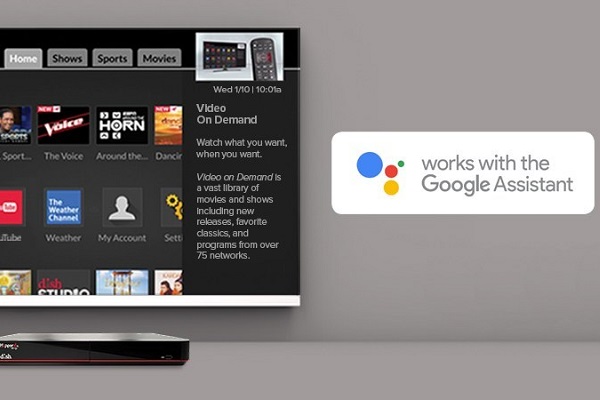Dish Integrates Google Assistant into Hopper Voice Remotes

Google Assistant is now directly connected to Dish network subscribers using the Hopper line of receivers. This marks the latest of Google’s recent extensions of its voice assistant into a new range of third-party products.
Google Satellite TV
Dish first offered a way to connect to Google Assistant last year, not long after a similar announcement that it could integrate with the Amazon Alexa voice assistant. But, while that worked by connecting a Google Assistant-enabled device to a set-top box, there was no microphone or internal Google Assistant in the Dish products. Now, the merging of the two services is much more thorough.
The integration of Google Assistant doesn’t change the actual content of the television, but it does open up new ways of interacting with it. The Dish voice remote allows users to ask Google Assistant to find specific channels, search based on genre, and control playback. In most ways, it’s a lot like other set-top boxes, whether Amazon Fire, Apple TV or other smart television systems.
One notable expansion beyond the TV is that the voice remote can also be used to control other smart devices. Once connected, it can control lights, thermostats, and anything else installed in the house, like the Nest Home or similar devices in the Google ecosystem. Google Assistant will also perform all the tasks it does from other devices, answering questions about the weather or other topics, and displaying the answers on the TV. In a lot of ways, combining Dish and Google Assistant makes the television a really large, high-quality smart display, albeit one with a remote microphone.
Google Assisting Everywhere
Google has had a spate of announcements over the last few months about adding Google Assistant to new brands or redesigning how users interact with it in different environments. Lenovo’s big play for the smart display market uses Google Assistant as its main software, while Bose made the voice AI an option for its own line of smart speakers. And, while Google Assistant has been connected to cars by Android Auto for over 18 months now, this summer will see a complete redesign of the system, partly to make Google Assistant more convenient to use while on the road.
The effort to get Google Assistant into as many devices and places as possible makes plenty of sense as Google competes with the other tech giants. Android TV is competing with Amazon and Apple’s respective television set-tops, but that doesn’t mean there isn’t opportunity in third-party operators.
Dish could certainly benefit from offering Google Assistant. Its subscriber numbers dropped by 259,000 in the first quarter of the year to 12.06 million, and most of its new members are coming in via digital service Sling rather than regular satellite television. If integrating Google Assistant attracts more customers for Dish, it’s more than likely that Google and its competitors will seek out more television providers and offer their particular voice assistants for partnerships. Regardless, with voice control now nearly ubiquitous among streaming media device providers, integration with leading voice assistants is no longer a feature differentiator and instead has quickly become a consumer expectation.
Follow @voicebotai Follow @erichschwartz








